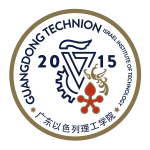14 October 2020
Guangdong Technion - Israel Institute of Technology (GTIIT), China & Technion-Israel Institute of Technology, Israel.
The Physics Program (group of Associate Professor DSc. Dr. Marcelo Ciappina) is looking for 1 PhD student to conduct theoretical research projects in laser-atom interaction related to attosecond physics. Contract duration: 3 + 1 years.
A detailed understanding of the few-body breakup of atomic and molecular systems remains a challenging task. Only in the last decade have theoretical methods been developed that provide a complete description of the photon-impact double ionization of helium and the electron-impact ionization of hydrogen, the simplest quantum three-body Coulomb breakup problems. Insight into the full dynamics of these systems has enabled a better and more complete interpretation of the photon- and electron-impact ionization of more complex atoms.
A variety of non-perturbative time-dependent close-coupling methods have been developed to handle quantum three-body and four-body Coulomb breakups found in photon-impact, electron-impact, and ion-impact ionization of atoms, molecules and their ions. For atoms and low charged atomic ions, the time-dependent Schrödinger equation (TDSE) is solved using an expansion in coupled spherical harmonics. On the other hand, for diatomic molecules and low charged molecular ions, the TDSE is solved using an expansion in rotational functions. Finally, for highly charged atomic ions, the time-dependent Dirac equation is solved using an expansion in coupled spin-orbit eigenfunctions. In all the cases, the resulting time-dependent close-coupled differential equations for the expansion coefficients are solved on 2D, 3D, or 4D numerical lattices using massively parallel supercomputers. A variety of additional numerical codes are used to extract observables, ranging from total cross sections to fully differential quantities both in electron and recoil-ion variables, from the time propagated numerical expansion coefficients.
Since atomic and molecular processes are present in most physical phenomena, ranging from astronomical observations of the early universe to the laboratory production of microchips, a more complete understanding of the few-body dynamics of atoms and molecules can lead to a wealth of new scientific discoveries.
The aim of this project is to extend the time-dependent close-coupling codes to treat multiphoton processes. The utilization of near-infrared laser sources for initiating the electron dynamics in atoms and molecules is well understood. Consequently, and considering the small single photon energy of the electromagnetic radiation, many photons are needed to single or double ionize small atoms and molecules. The computational resources needed to solve the time-dependent close-coupled equations become prohibitively large when the number of photons increases. Fortunately, there exist nowadays large computational facilities here in China that allows us to scale the current and well tested time-dependent close-coupled codes.
Time-dependent close coupling, numerical modeling, attosecond physics, laser-atom interaction, high-performance computing
- Master degree (or equivalent) in Physics, Atomic Physics or Computer Science (essential)
- Strong background in atomic physics (preferable)
- Strong interest in high-performance computing (essential)
- Strong interest in programming and numerical modeling (essential)
- Strong interest to work temporarily at research institutes in China, Europe, Israel and Japan (essential)
- Good communication skills, good command of English (essential)
- Ability to work independently as well as in a team environment (essential)
- Ability to author scientific reports and co-author scientific publications (essential)
- The PhD candidate must fulfill the requirements for admission to the Technion Graduate School and needs to comply with its regulations leading to the PhD/Master degree: https://graduate.technion.ac.il/en/prospective-students/

